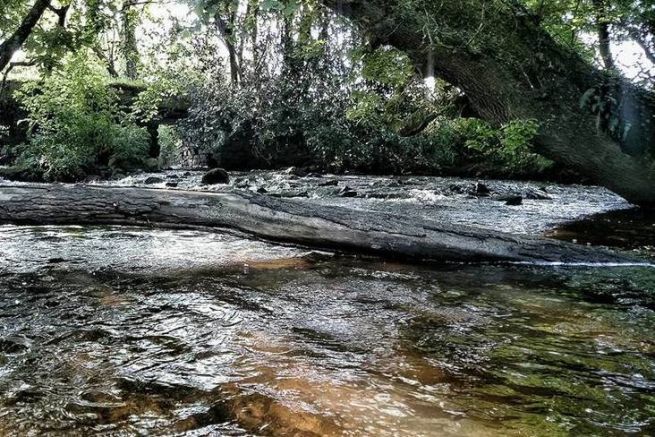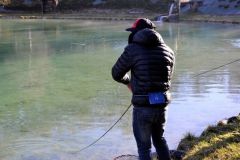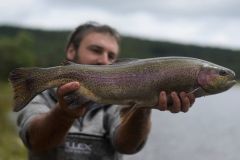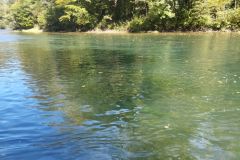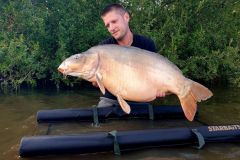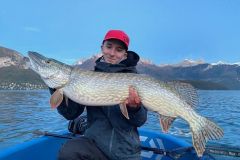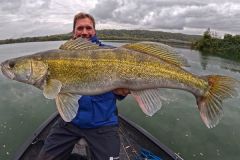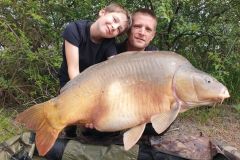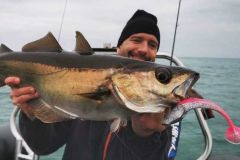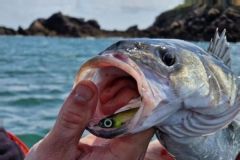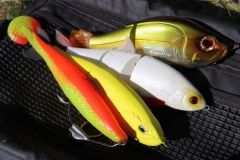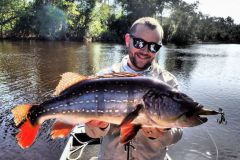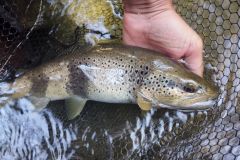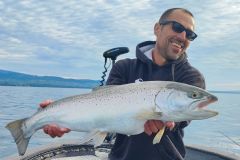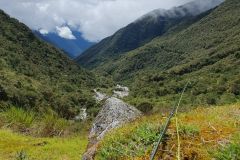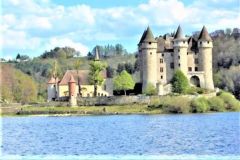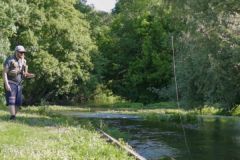The trout (Fario) is a species that can reach 80 cm to 1 meter in some very specific biotopes. It can be tracked in very deep gorges, wide rivers but also in torrents, small rivers and streams. In the latter, and moreover if the waters are acidic, the growth of trout is very slowed down and it is almost impossible to find a 40cm fish.
In Brittany, there are many streams corresponding to this description and yet it is possible to make very nice peaches. They are certainly small fish, but fishing them gives a lot of pleasure.
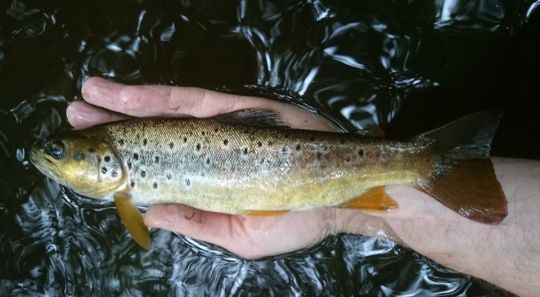
The fishing context
Most of the time, these are streams, sometimes a metre or two wide, with very congested banks and vegetation overhanging the water. The depth can go from 20cm to almost 1m in some holes or calms.
In this type of biotope the vast majority of catches are not meshed and a 30cm trout is a big fish!
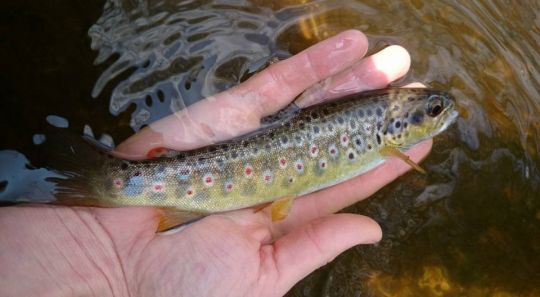
Constraints to be taken into account
The first constraint to be taken into account is the small size of the fish which encourages the use of small lures (less than 5cm).
The second is the very low diversity and size of the spots. Sometimes it can be a small waterfall with a strong current. This spot will be very small and yet relatively deep, so a lure that flows very fast will be necessary to fish it properly.
As we have just said, the spots are very small and sometimes difficult to access, which requires to be very precise when casting and therefore to use lures which are indeed very easy to cast and above all which are very quickly put into action.
Possible techniques and animations
In this type of environment, all techniques are possible, from fishing with soft lures, minnows, crankbait or even with spoons. The main thing is to have a panel of lures that can be adapted to each position.

The variables
The profile of the fished spots being very varied, both in terms of depth, current and size, your lure selection must allow you to fish in 20cm of water as well as in 80cm, sinking fast or floating. These lures must also allow you to fish both upstream and downstream and must therefore not stall and must be put into action very quickly or be animated in a very small space where you wish to insist on deciding on a sucker trout.
Finally, you should have natural colours (trout or minnow) and some flashy colours that sometimes work very well when the trout are very aggressive.
The 10 lures selected
- D-Compact by Smith
The D-Compact is a very fast sinking lure that I particularly like to fish deep holes with current downstream of waterfalls. I handle it almost like a soft lure, by small pulls on the bottom.
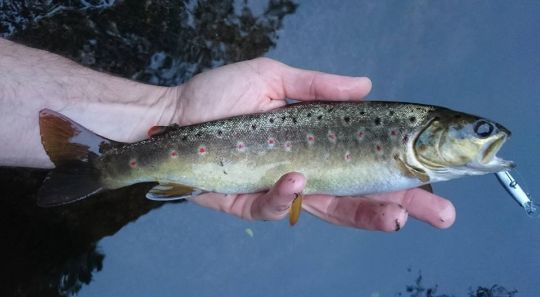
- A Powertail 30 or 38mm from Fiiish
In the same type of spots as before or in areas of deep currents I also use the Powertail 30 and 38mm of Fiiish in fast sinking version.
- A little crankbait
A small crankbait is ideal for prospecting the riffles. I use the Illex Chubby Minnow 35 and the Yo-Zuri L Minnow in 4.4 cm.
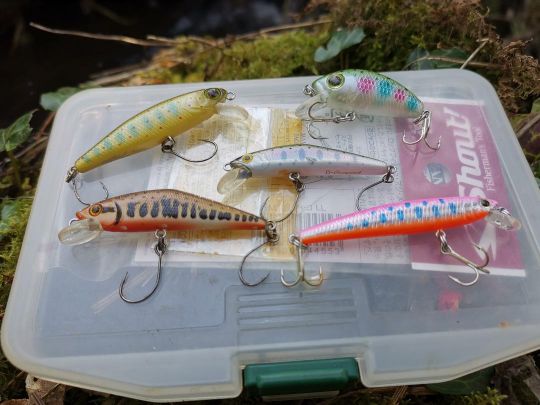
To complete my selection of swimming fish, I always have in my box some small minnows to jerker. There are sinking, floating and suspending models that allow you to fish at different depths. I particularly like the Humpback Minnow from Lucky Craft, the Pin's Minnow from Yo-Zuri or the Tiny Fry from Illex.
- A rotating spoon
Even if today for many fishermen these lures seem obsolete, it seems inconceivable to me to fish trout without having a few spinning spoons in the box. For my part, I still have an Aglia Long (willow leaf) in size 1 or 2 and a Black Fury with yellow dot!
- A spoon
In order to present a bigger bite, I also have a spoon in my box. It works exactly like the previous ones but offers a bigger volume.
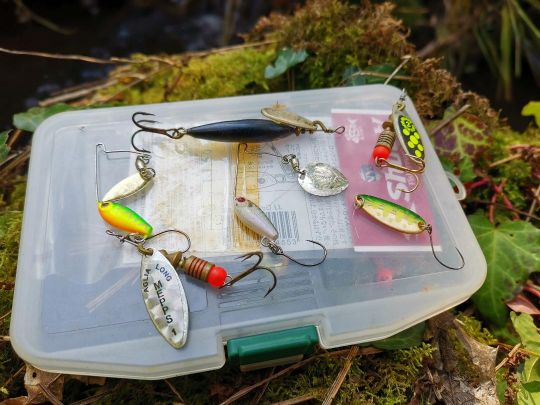
- A waving spoon
Under the influence of reservoir fishing and the development of Area Fishing, the undulating waters have become more democratic among trout fishermen. This is a very versatile lure that allows you to fish 3/4 upstream drifting or downstream as well as with small pulls.
- A micro-spinner
Microspinners are the last metallic lures you should have in your box. They benefit from the efficiency of the spinning spoon but allow you to fish a little more hollow!
- Some soft lures in 2 and 3 inches
For line or scratch fishing I always have in my box some soft lures mounted on leaded heads from 1 to 3g. I use Sawamura's One up 2 inches, Keitech's Shad Impact 3 inches or small grubs like Delalande's Sandra. Finally, to present a bigger bite I also have Black Minnow 70 from Fiiish with a 6g head.
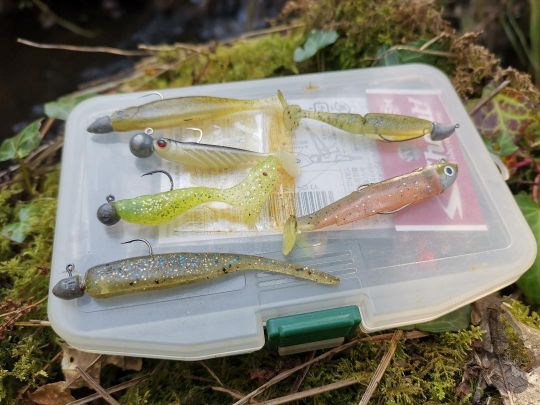
- A 2 and 3 inch Gulp Minnow
Finally, because I am a fan of this range, I also have in my box some Berkley Gulp Minnows in 2 and 3 inches for slow scratching. The small model imitates perfectly a drifting larva.

 /
/ 